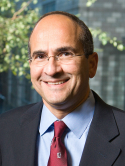| Abstract: |
Background Microsurgical breast reconstructions (MBRs) are time and labor intensive procedures. To circumvent these barriers, plastic surgeons have started working together as cosurgeons (CSs). This study aims to evaluate the impact of the CS model (CSM) specifically on bilateral MBR. The hypothesis is that CS procedures reduce operative time and surgical complications. Study Design This was a single institutional retrospective cohort study, which included all consecutive patients who underwent bilateral MBR from 2014 to 2016. Patients were grouped into single surgeon (SS) or CSs based on the number of the attending plastic surgeons present. Demographic and clinical characteristics including age, body mass index, smoking, American Society of Anesthesiologist class, radiation, and the timing of the reconstruction were assessed. Univariate and multivariate analyses were performed for outcomes including operative time and postoperative complications. Results Of the 136 patients included in the study, 41% had breast reconstruction performed by CSs, whereas 59% had a SS. Sociodemographic features were evenly distributed with the exception of a greater number of delayed reconstructions in the SS group (33 vs. 13%; p <0.01). Pedicle TRAMS (transverse rectus abdominis musculocutaneous flaps) were performed in 5 versus 0% of SS versus CS cases, respectively. Rates of major (4 vs. 16%) and minor (11 vs. 24%) complications were significantly lower in CS procedures. Multivariate analyses demonstrated CS operations required significantly shorter operative time by 73 minutes (p <0.001), and trended toward a reduced postoperative complication rate (p = 0.07). Conclusion The CSM is associated with improved operative efficiency for bilateral MBR. Further evaluation of the CSM may prove useful in other surgical disciplines with time and labor intense procedures. |











